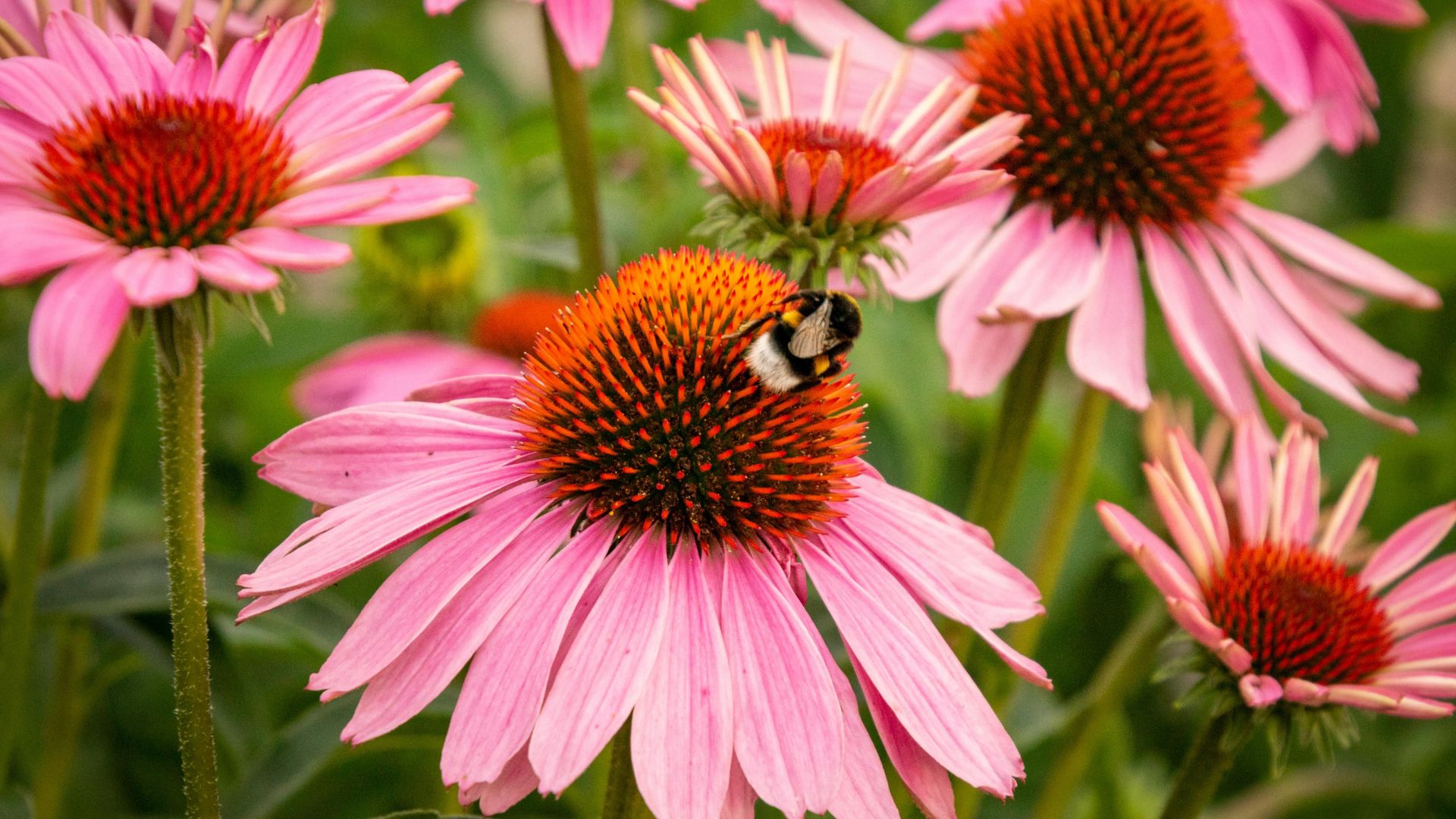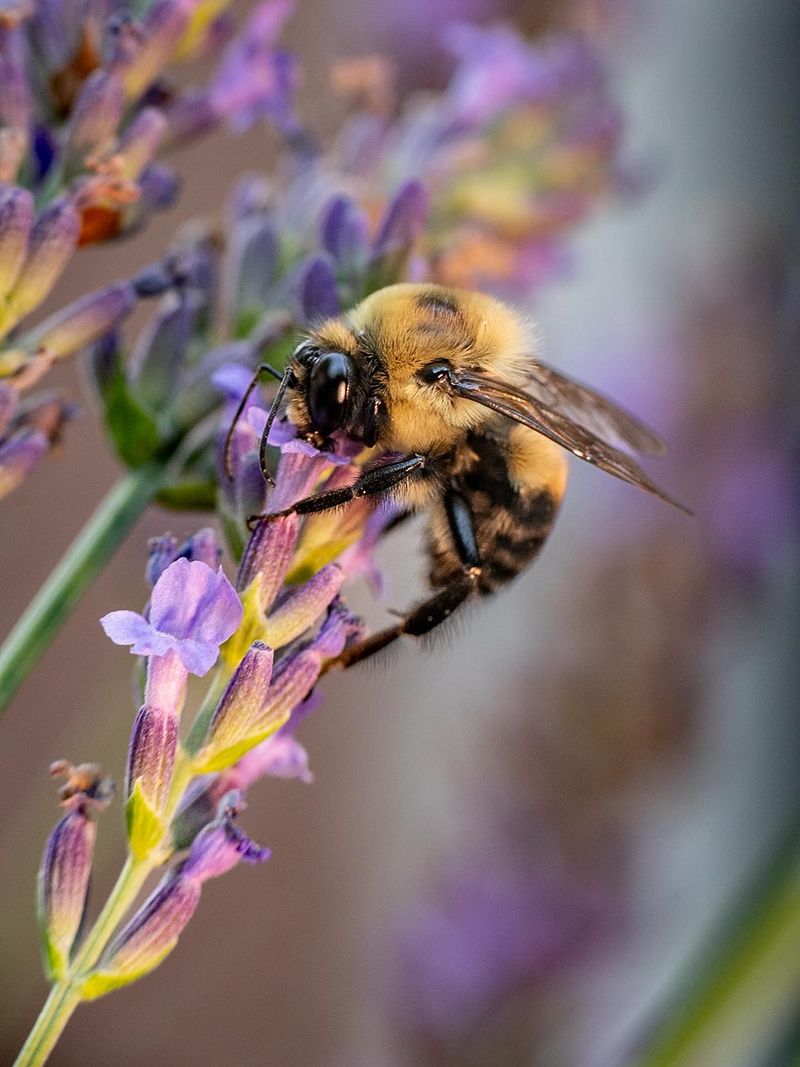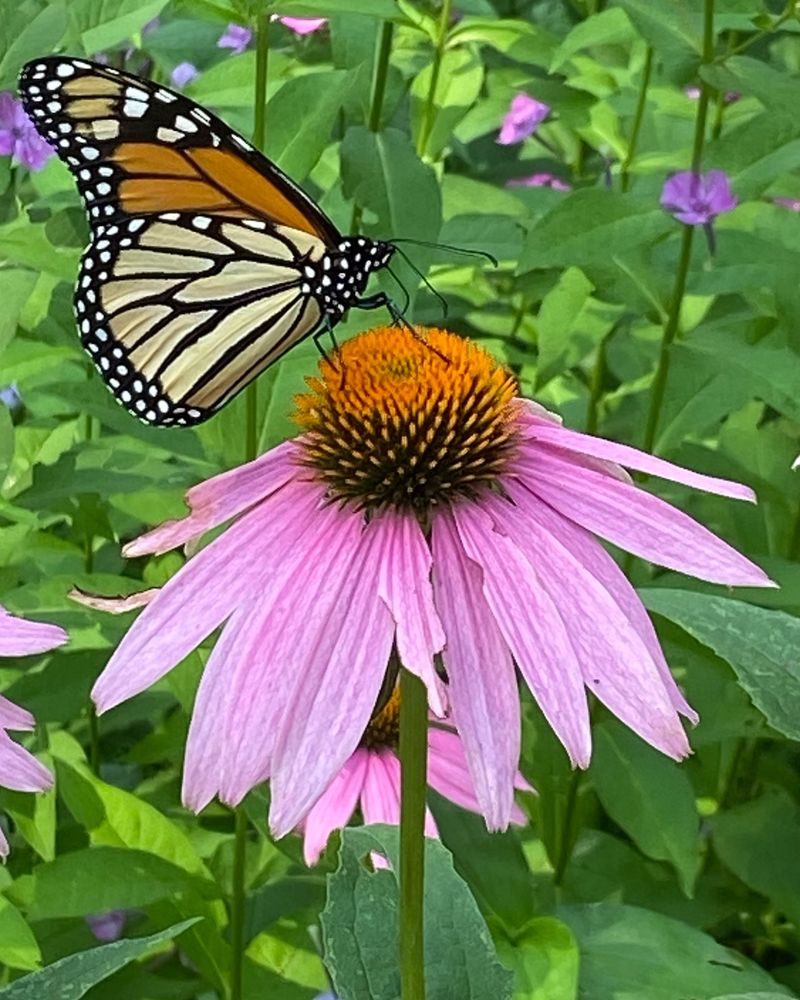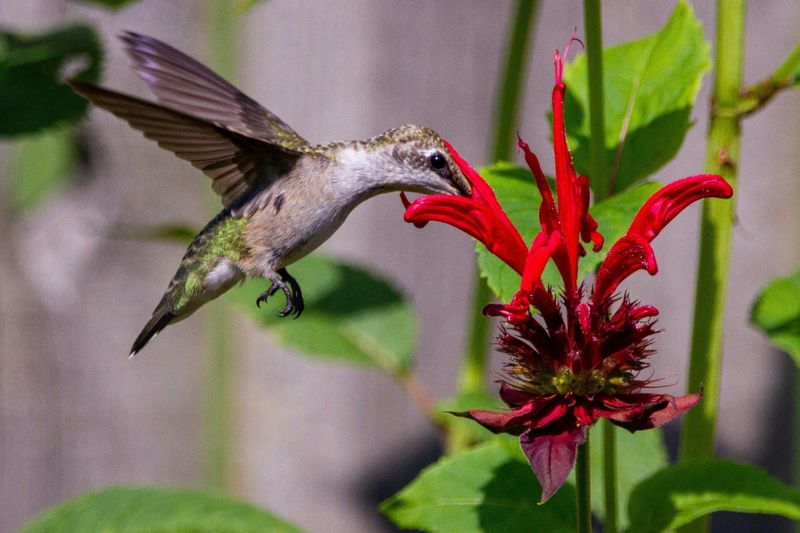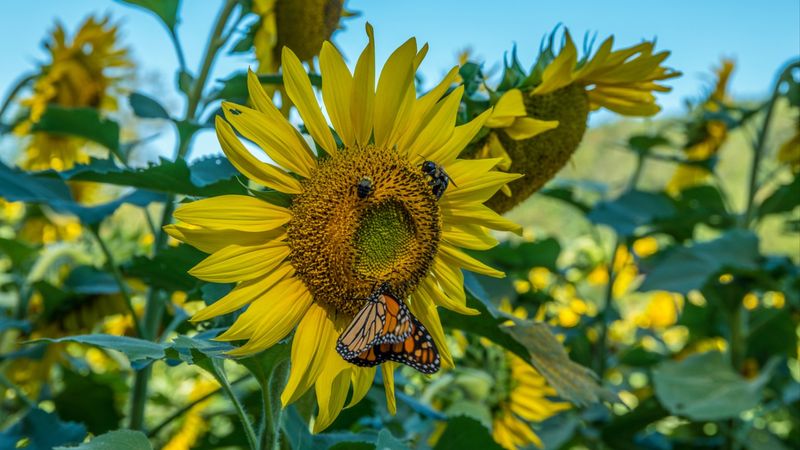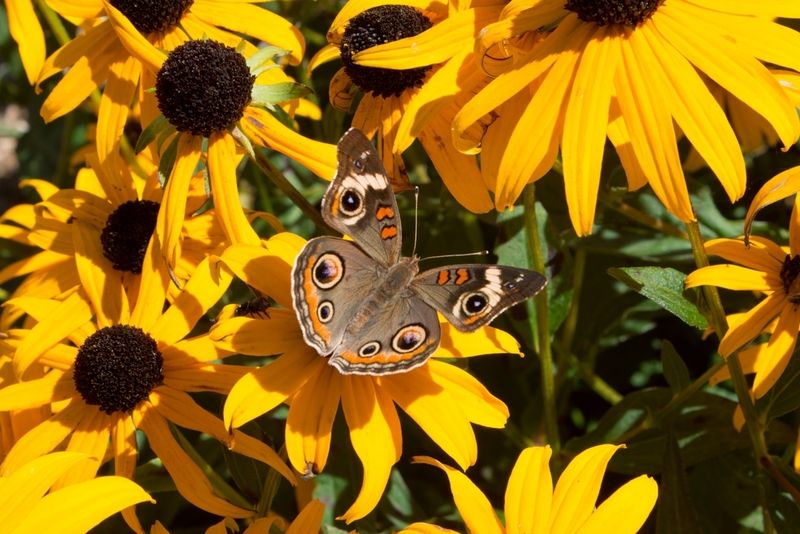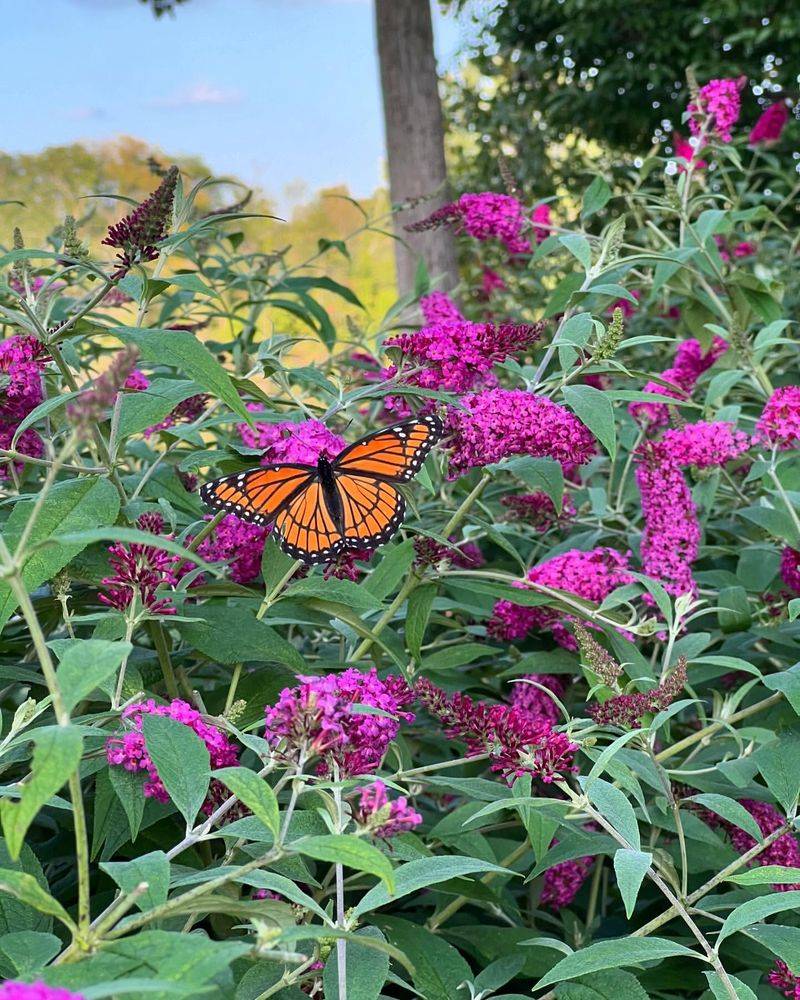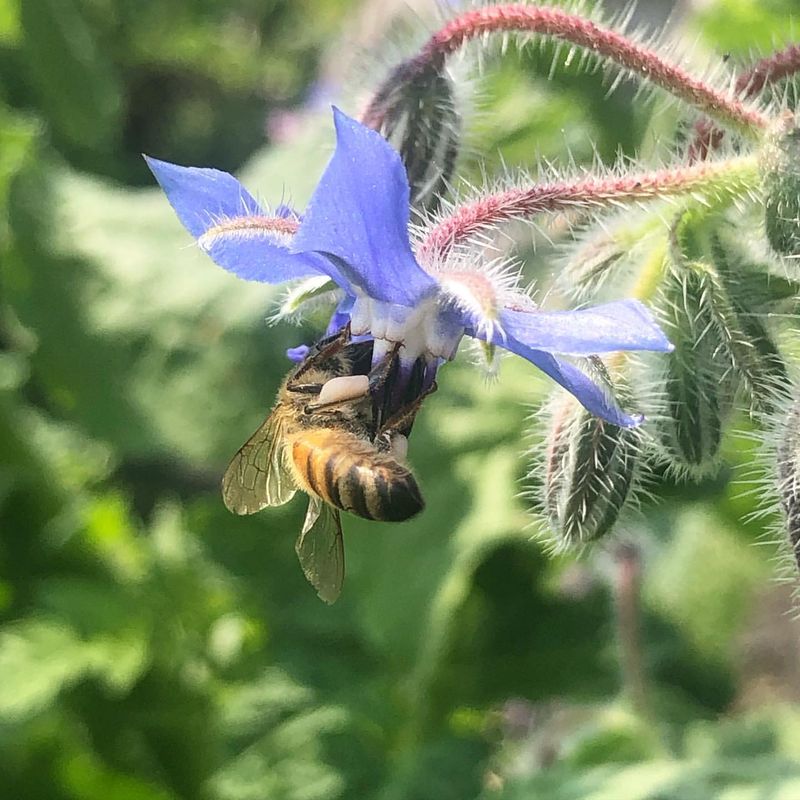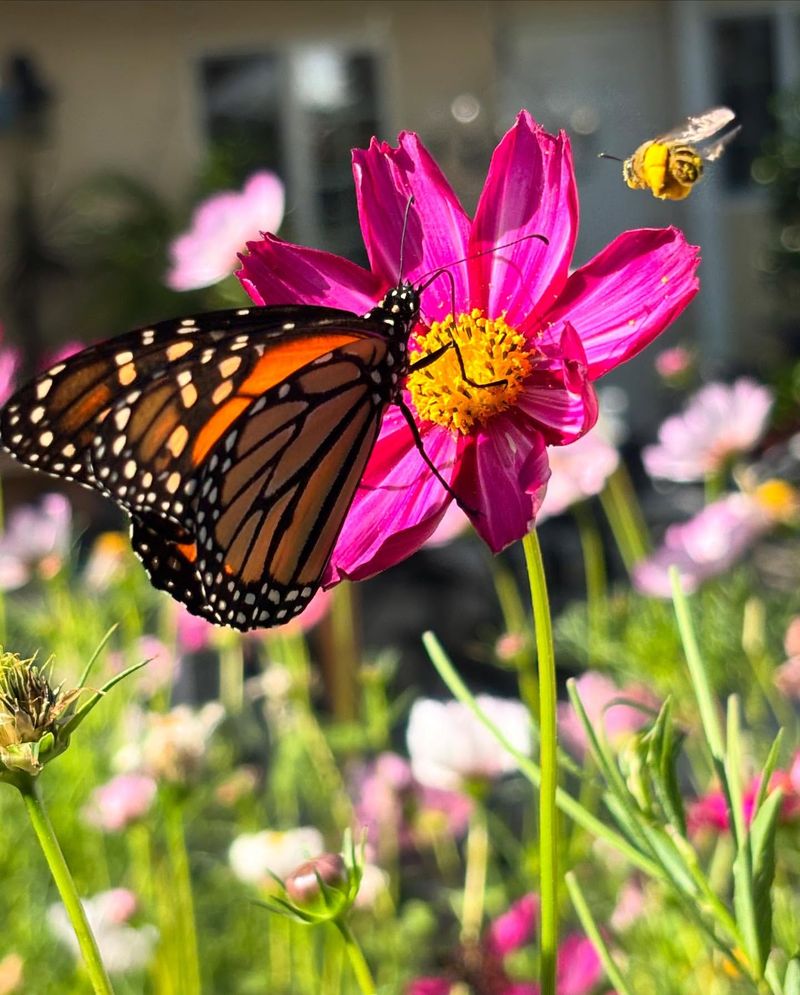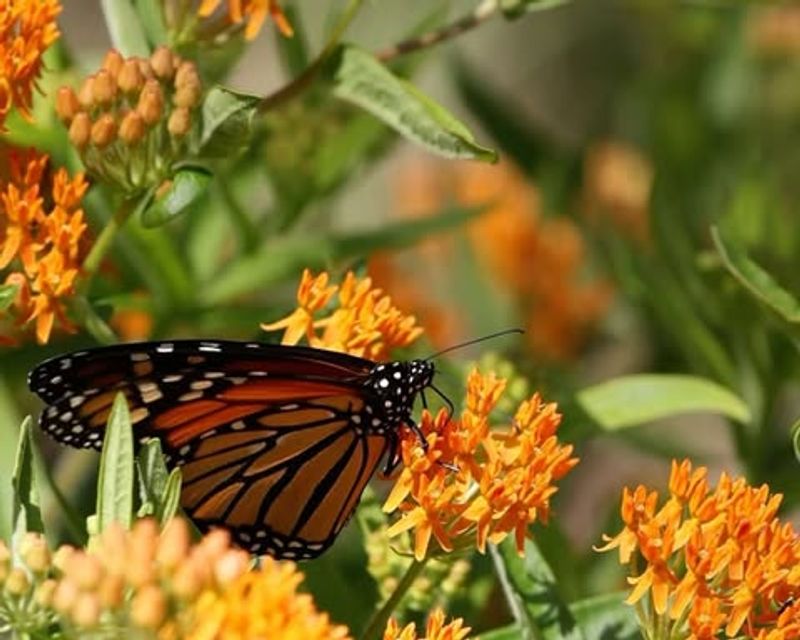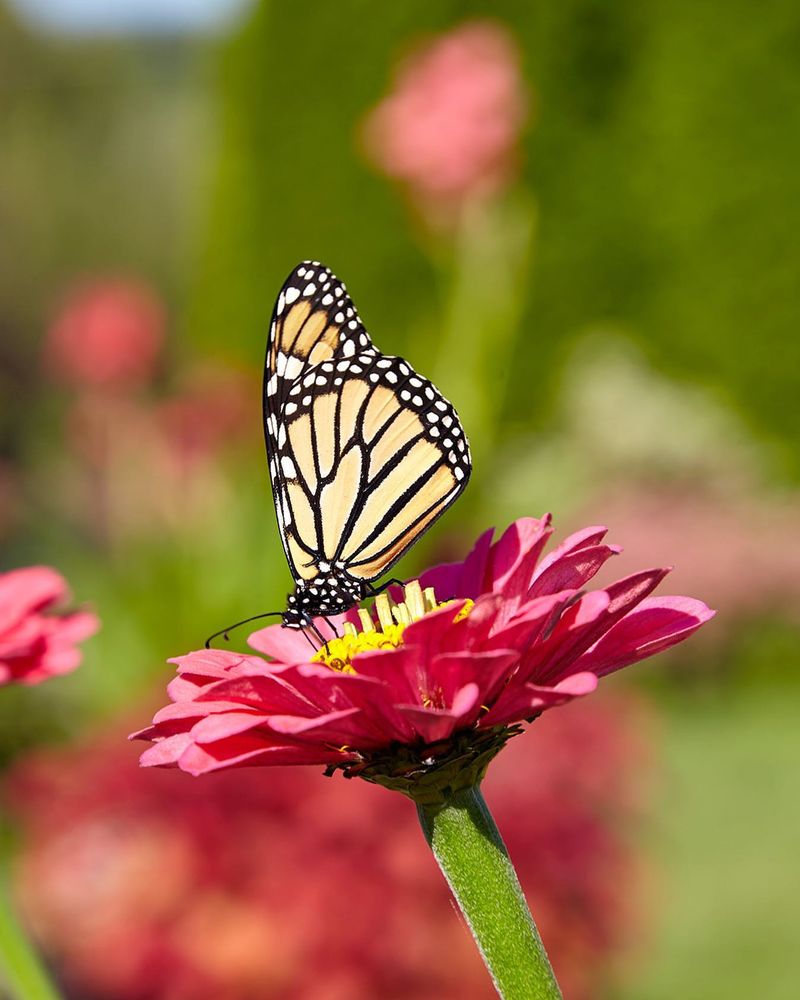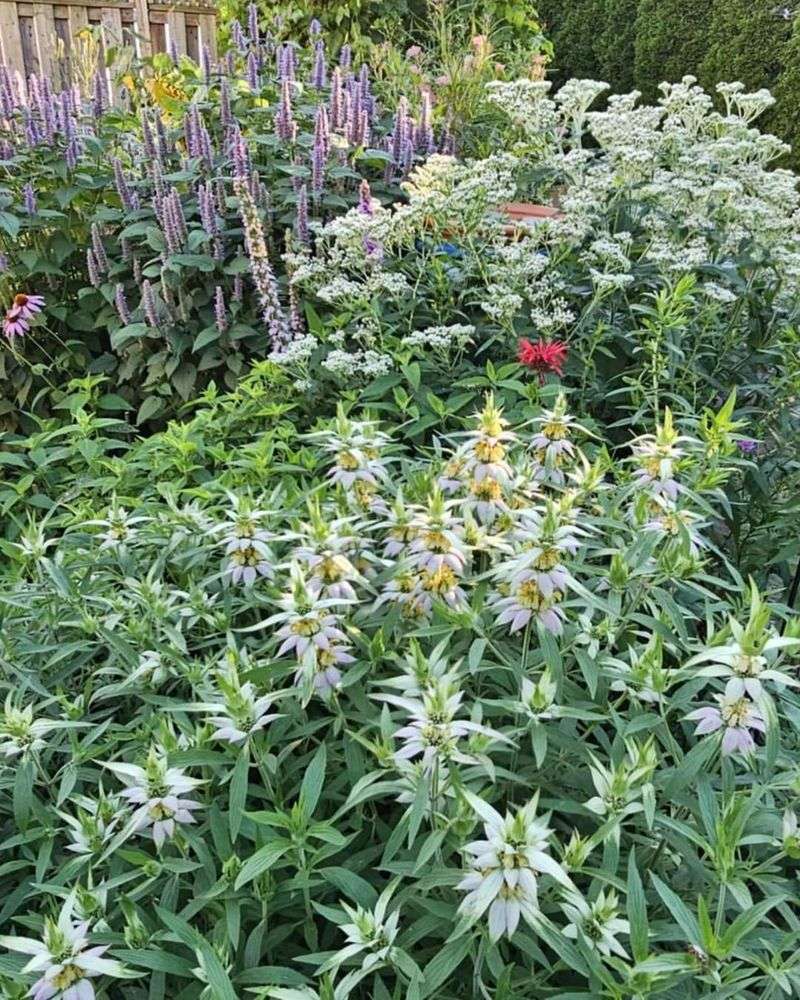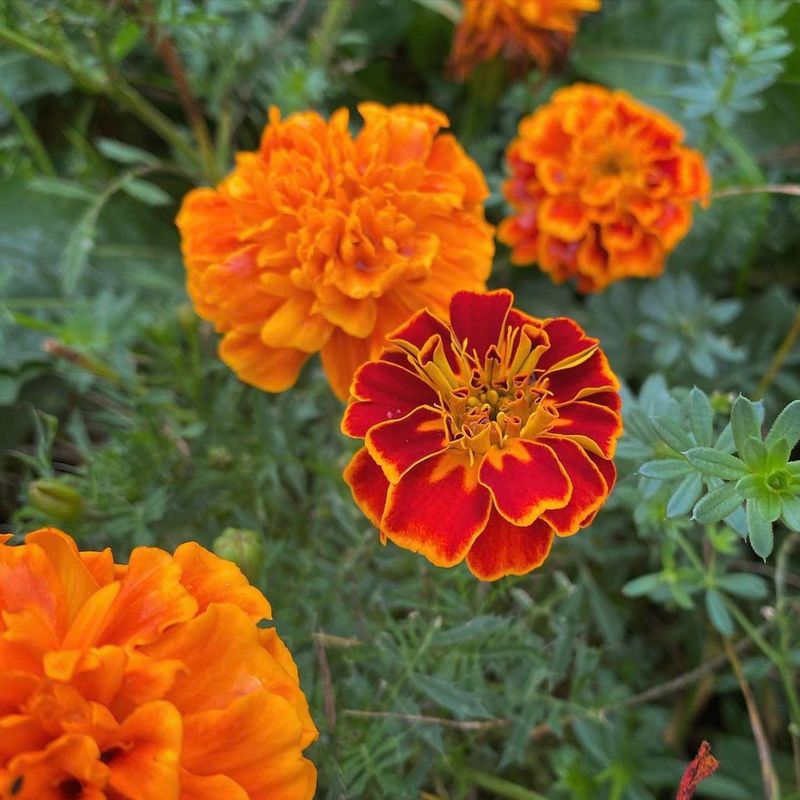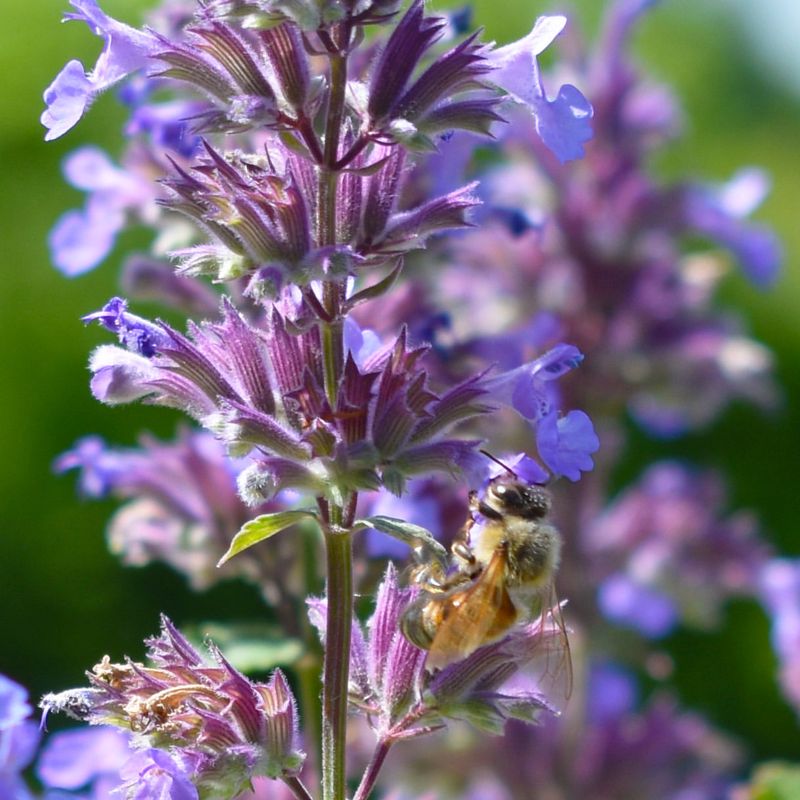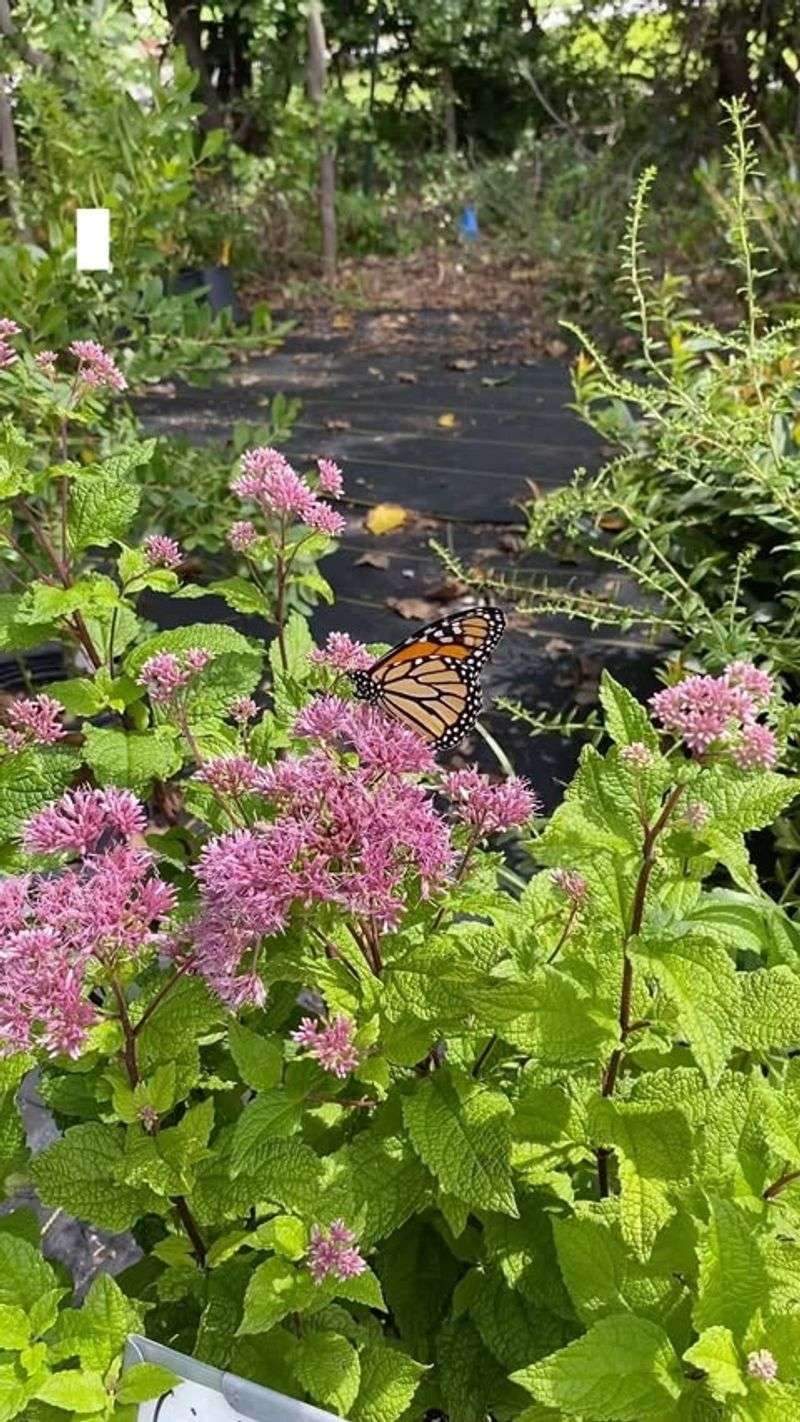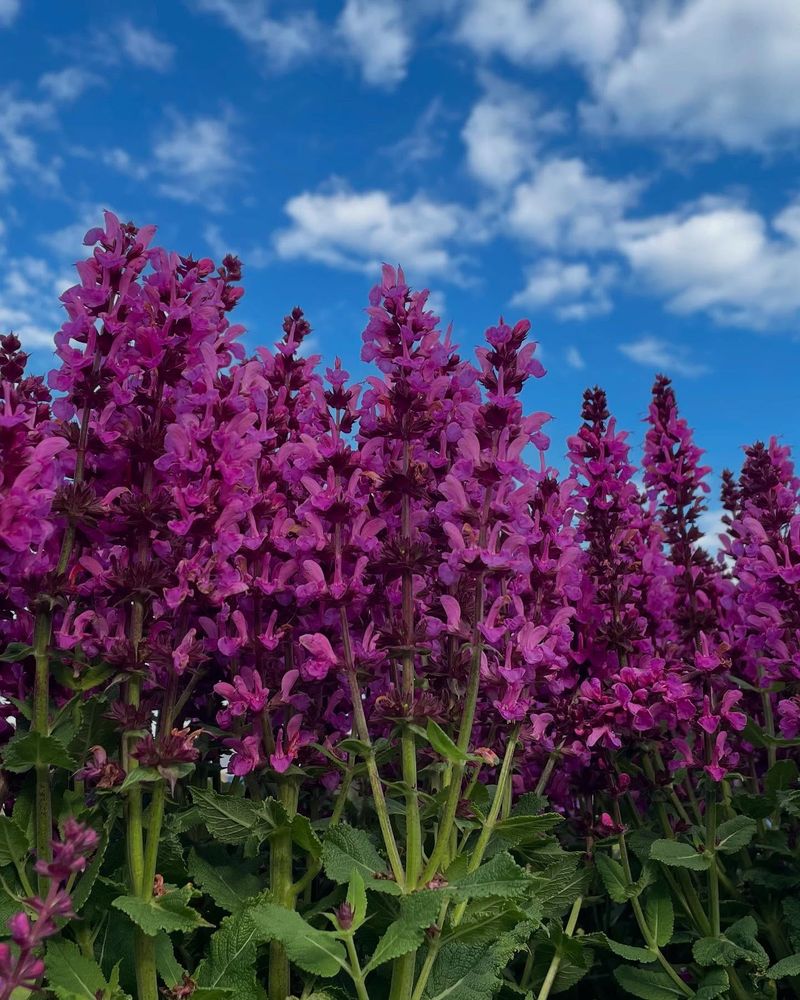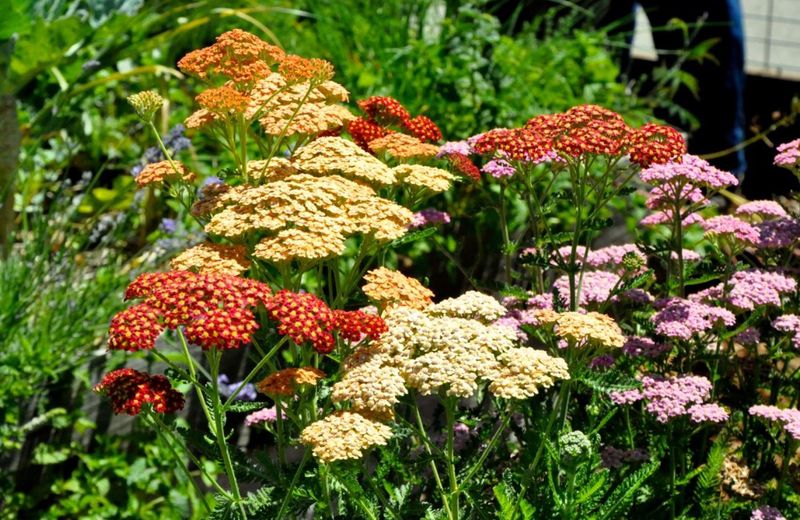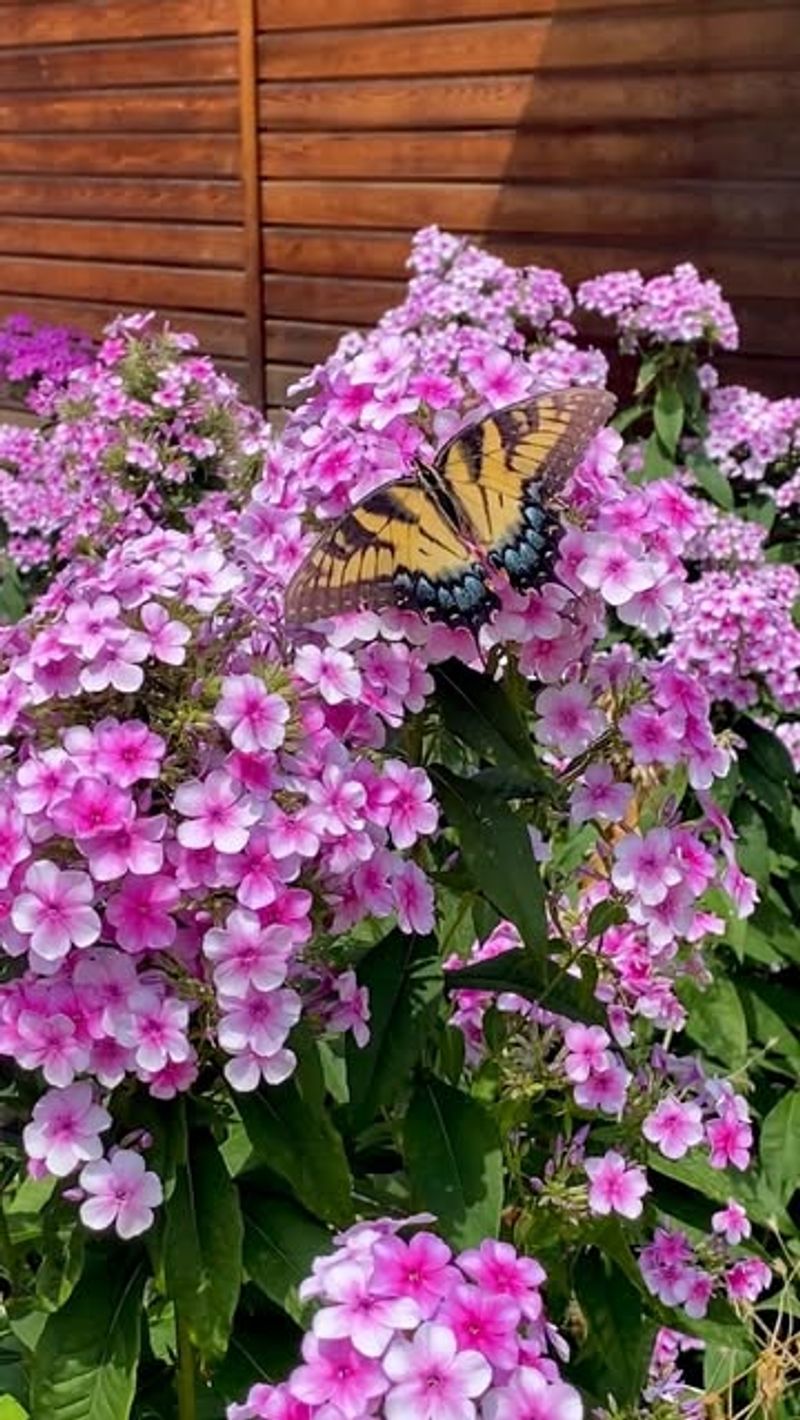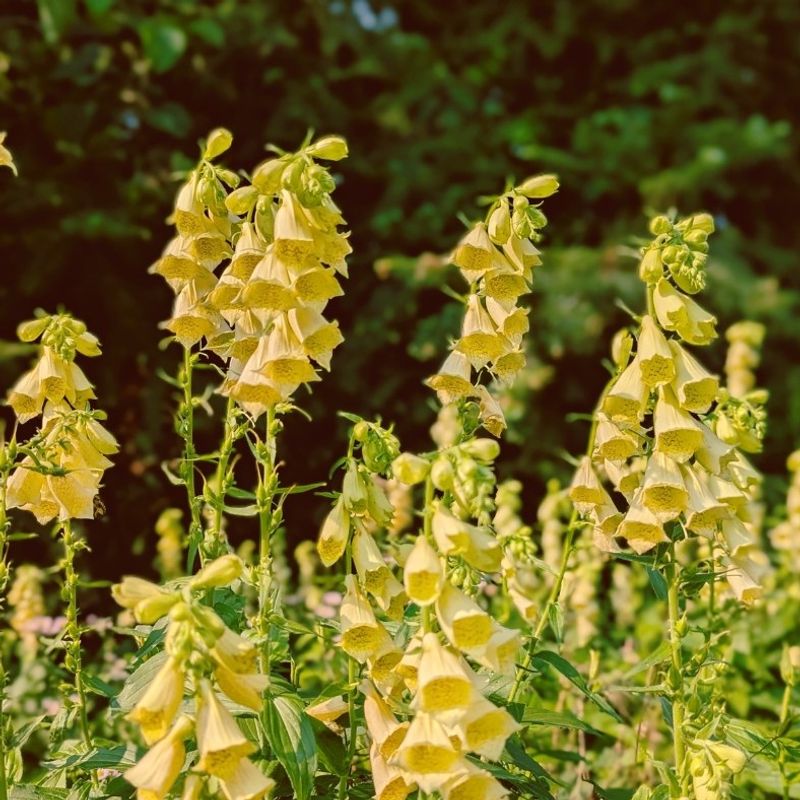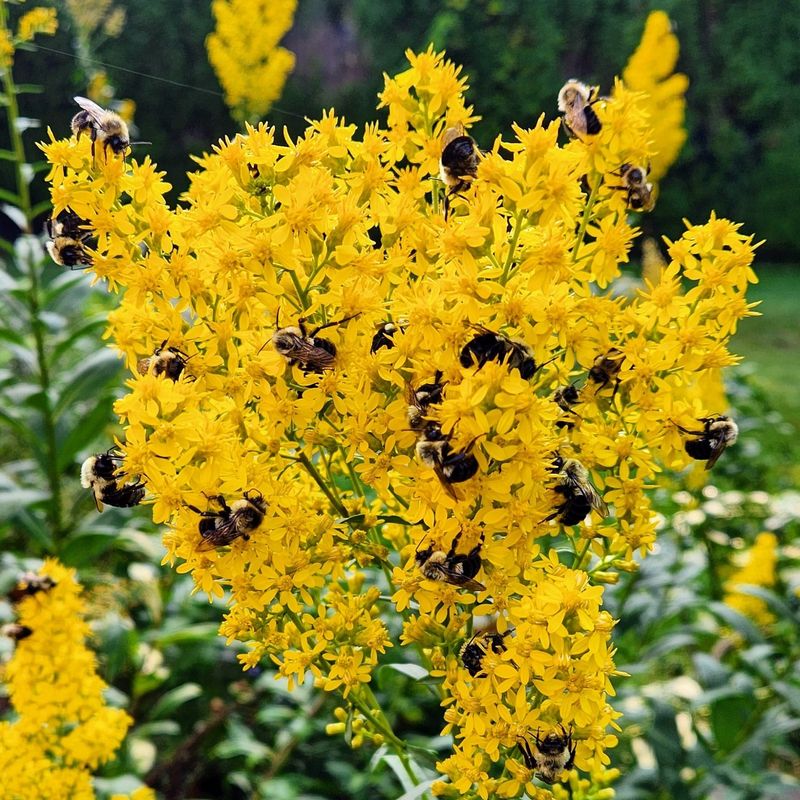My garden has come alive ever since I started planting blooms that welcome pollinators. What used to be a quiet patch is now buzzing with bees, fluttering butterflies, and hummingbirds zipping by like tiny jewels. It’s a daily dance of color and motion that brings a new kind of joy.
These pollinator-friendly plants don’t just make things prettier—they serve a purpose. Every visit helps support our ecosystem, encouraging biodiversity and boosting everything from fruit yield to seed spread. It’s nature doing its magic, one tiny wingbeat at a time.
Watching this transformation unfold has deepened my connection to the space. With each flower I add, I’m not just gardening—I’m creating a haven for the creatures that keep our world blooming.
1. Lavender
The fragrant purple spikes became an instant hit with bumblebees in my garden. I was amazed by how quickly they found it after planting.
Growing in my sunniest spot, this Mediterranean native requires little water once established. Last summer, I counted five different bee species visiting in a single afternoon!
For best results, I trim it back after flowering to prevent woodiness and maintain its compact shape.
2. Coneflower (Echinacea)
Native to North America, these sturdy blooms have become the cornerstone of my pollinator garden. Their raised centers provide perfect landing pads for butterflies and bees.
During mid-summer heat waves, when other plants wilted, my coneflowers stood tall. The goldfinches love to perch on the dried seedheads in fall.
My favorite variety is ‘Magnus’ with its vibrant pink-purple petals that maintain their color even in intense sun.
3. Bee Balm (Monarda)
Hummingbirds fight over these scarlet blooms every July! The unusual spiky flowers resemble exploding fireworks and create instant drama in my perennial border.
Despite its showiness, bee balm proves remarkably unfussy about soil conditions. My patch has spread steadily over three years, attracting more pollinators each season.
A quick tip: improving air circulation by thinning plants helps prevent the powdery mildew that sometimes affects the leaves.
4. Sunflower
Planting a row along my fence created a buzzing highway of bee activity! The massive flower heads become living buffets for pollinators from morning until dusk.
My grandchildren love watching bumblebees cling to the centers, their legs heavy with golden pollen. Even the smallest varieties in containers attracted plenty of beneficial insects.
After flowering, I leave the dried heads standing as natural bird feeders that finches and chickadees visit throughout fall.
5. Black-Eyed Susan (Rudbeckia)
Golden daisies with chocolate centers brightened my garden from June through October. Their extended blooming period makes them pollinator superstars in my experience.
Drought-tolerant and disease-resistant, these native beauties survived neglect during my two-week vacation without missing a beat. Butterflies particularly favor them on hot afternoons.
Deadheading spent blooms encouraged fresh flowers, but I left the final flush to develop seeds for goldfinches that visit in autumn.
6. Butterfly Bush (Buddleia)
From mid-summer through fall, the arching branches become butterfly magnets, sometimes hosting a dozen at once!
Watching swallowtails and monarchs dance around these fragrant panicles brings unexpected joy. My specimen grew surprisingly quickly, reaching nearly six feet in its second year. The sweet honey scent drifts across the yard on warm afternoons, attracting pollinators from considerable distances.
Cutting back hard in early spring keeps it manageable and produces bigger flower clusters the following season.
7. Borage
Star-shaped blue flowers dangle like tiny lanterns above fuzzy leaves, creating an almost magical effect in my herb garden. Honeybees seem particularly drawn to the nectar-rich blooms.
Once established, borage reseeds itself reliably each year. The cucumber-flavored leaves make surprising additions to summer salads and cooling drinks.
My original three plants have spread to create a generous patch that blooms from late spring until frost, providing continuous support for pollinators.
8. Cosmos
Airy stems topped with daisy-like blooms dance in the slightest breeze, creating a dreamy backdrop in my cutting garden. Bees work the flower centers while butterflies rest on the broad petals.
From just one packet of seeds scattered in May, I enjoyed hundreds of flowers by mid-summer. Their ferny foliage stays attractive even when not blooming.
Cutting stems for bouquets actually encouraged more branching and additional flowers, extending the pollinator buffet well into fall.
9. Milkweed (Asclepias)
Monarch butterflies found my patch within days of the first flowers opening! The complex blooms produce abundant nectar that attracts a surprising diversity of pollinators beyond just monarchs.
Orange butterfly weed (Asclepias tuberosa) proved most garden-friendly for my space. Its drought tolerance meant zero supplemental watering even during July heat.
Leaving the fascinating seed pods to mature and split open in fall creates a fascinating nature lesson for visiting children – and spreads more plants for next year.
10. Zinnia
Candy-colored blooms became butterfly hangouts by mid-summer! The flat landing platforms of these cheerful flowers make perfect resting spots for pollinators of all sizes.
Starting with just a dozen seedlings, constant cutting for bouquets encouraged branching that resulted in hundreds of flowers. Even novice gardeners would find these rewarding.
My favorite varieties are the ‘Benary’s Giant’ series that produce massive blooms on sturdy stems that withstand summer storms without staking.
11. Anise Hyssop (Agastache)
Spikes of tiny lavender-blue flowers emit a delightful licorice scent that seems irresistible to bees. On sunny afternoons, my patch literally vibrates with pollinator activity.
Despite our clay soil, these native perennials have thrived with minimal care. The upright growth habit adds architectural interest to my garden’s middle section.
Leaving the seedheads standing through winter creates food for finches while ensuring new volunteer plants appear each spring to expand the colony.
12. Calendula
Sunny orange and yellow blooms open with the morning light, revealing pollen-rich centers that small native bees adore. Their cheerful presence brightens even cloudy days.
Cool weather brings out their best performance. My fall-planted patch flowered abundantly through our mild winter, providing rare nectar sources when little else bloomed.
Harvesting some petals for salads and skin-soothing oils still left plenty for the steady stream of pollinators that visited daily.
13. Catmint (Nepeta)
Clouds of lavender-blue flowers appear above aromatic gray-green foliage, creating a softening edge along my garden path. Bumblebees seem particularly fond of the tiny tubular blooms.
After the spectacular spring show faded, a quick trim with scissors brought a second flush that lasted until frost. Few perennials offer such extended pollinator support.
Despite its name, neighborhood cats largely ignore my ‘Walker’s Low’ variety, allowing the plant to maintain its attractive mounded shape throughout the season.
14. Joe-Pye Weed (Eutrochium)
Massive mauve flower clusters top impressive 7-foot stalks by late summer, creating a dramatic backdrop in my perennial border. Butterflies flock to these native blooms in impressive numbers.
Despite its intimidating height, my plants have never needed staking, even in our windy location. The vanilla-scented flowers attract fascinating pollinator species I rarely see elsewhere in the garden.
Being moisture-loving, this native thrives in the low spot that previously grew nothing but weeds.
15. Salvia
Spires of purple, blue, or red flowers create vertical interest while serving as hummingbird fuel stations! The tubular blooms perfectly match the birds’ specialized beaks.
My ‘May Night’ variety starts flowering weeks before most perennials, providing crucial early-season nectar. A quick trim after the first flush triggers repeat blooming throughout summer.
Drought tolerance makes these Mediterranean natives perfect for my hot, dry slope where irrigation is limited. Even in poor soil, they perform beautifully year after year.
16. Yarrow (Achillea)
Flat-topped flower clusters in gold, pink, or white attract tiny beneficial wasps and flies that help control garden pests. Their intricate bloom structure provides landing pads for smaller pollinators often overlooked.
Thriving in my garden’s poorest soil, yarrow’s drought tolerance means zero supplemental watering. The fernlike foliage adds textural interest even when not in bloom.
Cutting stems for dried arrangements still left plenty for the constant stream of pollinators that visited from June through September.
17. Phlox
Fragrant flower clusters perfume the evening air, attracting fascinating night-flying moths rarely seen during daylight hours. My ‘Bright Eyes’ variety with its pink blooms and red centers creates a cottage garden feel.
Hummingbird moths hover at the sweet-scented blooms at dusk, resembling tiny hummingbirds with their rapid wing movements.
These unusual pollinators became a highlight of summer evenings on the patio. Unlike many perennials, phlox maintains an attractive full shape without flopping or requiring staking.
18. Foxglove (Digitalis)
Bell-shaped blooms arranged in dramatic vertical spires became bumblebee highways in late spring! The spotted throat markings guide pollinators directly to nectar sources inside each flower.
Being biennial, my original plants bloomed magnificently in their second year, then set seed for future generations. The self-sown seedlings appear in perfect spots I wouldn’t have considered planting.
Partial shade beneath my apple tree proved ideal, producing stronger stems and longer-lasting flowers than those in full sun areas.
19. Goldenrod (Solidago)
Arching sprays of golden yellow flowers light up my autumn garden when many other plants have finished. Contrary to popular belief, these native beauties don’t cause hay fever!
Butterflies preparing for migration feast on the nectar-rich blooms. My ‘Fireworks’ variety with its fountain-like form attracts dozens of species during September and October.
Growing alongside purple asters creates a stunning color combination while extending the pollinator season until the first hard frost.
20. Liatris (Blazing Star)
Purple flower spikes that bloom from top to bottom (unlike most plants) create unusual vertical interest in my summer border. Monarchs preparing for migration seem particularly drawn to these native prairie plants.
Drought-resistant and deer-proof, my liatris bulbs have multiplied steadily over the years. Their unusual blooming pattern provides weeks of pollinator support.
Planting in groups of seven or more creates the most dramatic effect and increases visibility to passing butterflies searching for nectar sources.

